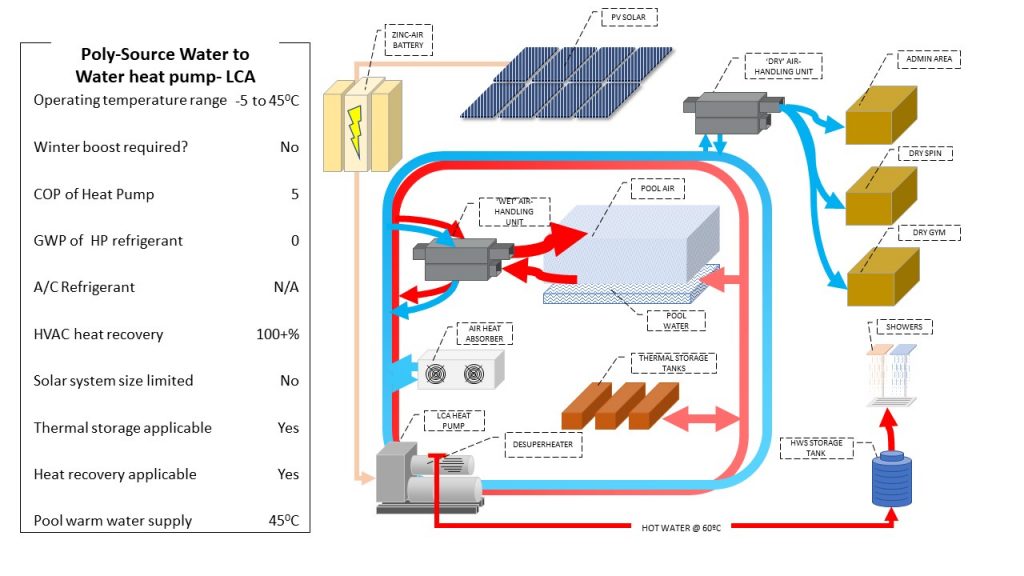Poly-Source Energy Systems
In 2018 SmartConsult started working with councils in Victoria and NSW to determine the most efficient energy system for aquatic centres. The price of gas had increased by around 50% for most councils in Victoria and a solution for councils to heat these centres was at the top of their wish lists. We started the process looking at the most efficient heat pumps that were available on the market, and after a few false starts we started talking to industrial refrigeration engineers. Over time aquatic centres had grown in size to move into industrial amounts of energy being consumed.
The most efficient heat pumps that are available on the market are Low Charge Ammonia heat pumps. The problem is, most councils have not had any experience with these heat pumps and their existing (and trusted) consultants also had no experience with them. So our first issue was to educate council staff and some of their consultants to the virtues of heat pumps that consumed far less energy and also required less maintenance than the gas plant they were familiar with. This was not as simple a task as one may imagine, and there was a lot of pushback from some professionals.
The next revelation was that in moving over to industrial heat pumps that were a ‘water to water’ design the ability to integrate other plant in the building to recover heat throughout the building and store thermal energy, further reduced the energy consumed. This ‘integration’ of the plant has not been possible before now:
- Pool water heating
- HVAC- pool air
- HVAC- dry exercise air
- HVAC- offices
- HWS- storage only (heat pumps provide the hot water via desuperheaters)
Further refinement of these systems with enhancements of solar PV, thermal storage, heat recovery from AHUs and showers have pushed the efficiencies well out beyond our initial calculations. The biggest takeaway from this system is that when you are designing the building to be thermally efficient and you are using an energy system where you can recover and reuse most of that energy, the size of the system required is much smaller than before. And that translates into large energy savings for councils and ratepayers.




